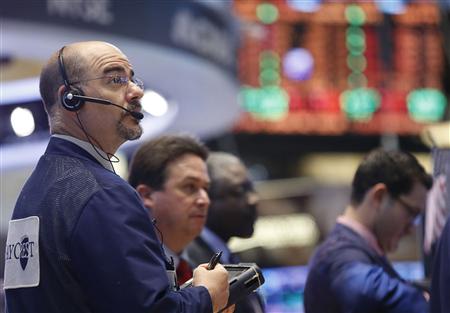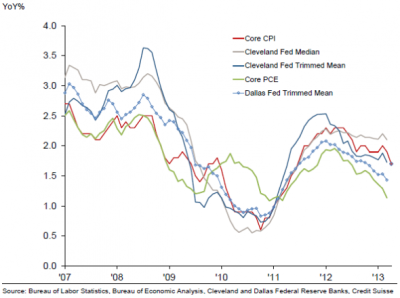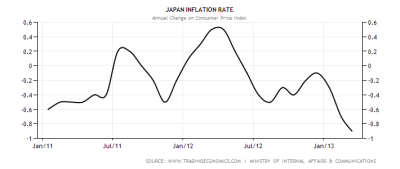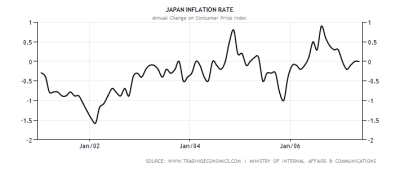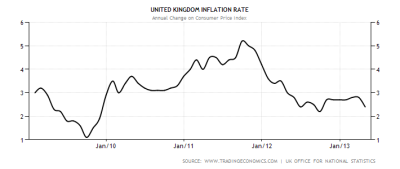by Lance Roberts
These are indeed interesting times that we live in. As the markets elevate higher on the back of the global central bank interventions it is important to keep in context the historical tendencies of the markets over time. It is not uncommon at major market peaks to see "irrational exuberance" begin to grip the markets. In March of 2000, a foreign capital inflows drove markets higher, Jim Cramer came out with his 10 must own stocks for the next decade. By the end of 2002, of the few that were still in business, the destruction of capital was enormous.
In 2008, as the markets hit all-time highs from a credit/real estate liquidity push, the justification was a "Goldilocks Economy," valuations were significantly less than in 2008 and "market risk" had been fully diversified through derivatives. Of course, by March of 2009, the bloodshed was enormous.
So, here we are once again with markets, driven by inflows of liquidity from Central Banks, hitting all-time highs. Of course, the chorus of justifications have come to the forefront as to why "this time is different."
“This market is nothing like 2000!”
“You have to realize just how amazing the markets are right now.”
“The ‘Walls of Worry’ have all been knocked down.”
“The next stop for the markets is simply higher.”
“This market is unstoppable.”
“I haven’t seen a market like this in 30 years.”
These were all things that I either read, or heard, in just the past month. I even read an article as to why that “This time is different – really!”
Here is an interesting statistic to think about for a moment.
The current rise in the stock market has gone uninterrupted for more than 190 days which is the longest period in the history of the stock market.
Think about that for a moment.
Over the last 113 years of stock market history we are now witnessing the longest rise – ever. Every single time in history, when the markets have gone on extended runs, they have NEVER, not once, lasted as long as the current artificially fueled advance.
There is no doubt that the current advance is quite amazing. However, it is not unstoppable. It will stop. It will correct. Of course, when it does, these same “book talking jacklegs” that made the statements above will have a litany of excuses has to why such a correction was unexpected. Of course, those excuses won’t replace your lost capital.
Let's review the most common of the bullish arguments.
Valuations Are Cheap
Take a look at the first chart below. First, notice the recent run-up in the market at the far right of the chart. This price action is very abnormal; it is called a parabolic spike, but is similar to what was witnessed at the peak of every previous bull market advance.
However, and importantly, one the primary “bullish” arguments has been valuations. The argument is that stocks are “fairly valued” because valuations reverted to their long term average during the financial crisis. That is true but also incorrect.
If you take a moment to inspect the chart above you will see several very important points:
1) Never in history have valuations ONLY returned their long term average before setting off into the next secular bull market rise.
2) When P/E reversions begin they continue until valuations have fallen well below the long term average. As denoted by the blue arrows - bull markets begin with valuations around 5-7x earnings with dividend yields between 5-6%. It is not uncommon, however, for there to be continued bounces in markets and valuations within the context of the longer term downtrend. Currently, the markets are trading at 23x cyclically adjusted earnings and 19x reported trailing earnings (1666/87.69). Does that sound cheap to you?
(Geek Note: You can NOT use forward operating earnings when comparing to historical valuations which are based on trailing reported earnings. This is the mistake every media outlet consistently makes.)
3.) When markets are in the process of a long term valuation reversion (blue dashed boxes) it is not uncommon for markets to have rallies within the long term decline. This was seen during the run-up from the 2002 lows which were also believed to be the next great secular bull market. This is just part of the long term reversion process and resolution of excesses.
4.) It is not likely that this time is any “different” than what we have witnessed in the past. While the interventions by the Federal Reserve can certainly elevate markets short term – the underlying lack of economic and fundamental strength will continue to put downward pressure on the markets. Bottom line – valuations “ain’t” cheap.
Earnings Have Peaked
Another key "bullish" argument has been the earnings and profitability of corporations. Let's take a close look at reported and operating earnings for corporations since the beginning of 2000.
(Note: The chart is only through the end of 2012 which is the last complete data set from S&P)
The problem is that the analysts that try and forecast what earnings are going to do in the future are always overly bullish. The chart below shows what analysts were predicting earnings to be for 2012 through 2013 at the beginning of 2012. What actually happened was markedly different.
As you can see in the chart above analysts are once again predicting an exceptionally strong increase in earnings per share over the next four quarters. This is a big part of the "bullish" thesis for the "cheapness" of stocks versus other assets.
This view is contingent on several things going right per Goldman Sachs:
1) That interest rates do not rising quickly collapsing the earnings yield gap. This is a faulty analysis anyway as we will discuss momentarily.
2) That economic stagnation ends and organic growth returns.
3) A continued recovery in labor and housing that is already showing signs of peaking for the current economic cycle.
4) Continued Federal Reserve interventions.
5) Expectations that current valuations remain suppressed by rapidly rising earnings per share.
The chart below shows Goldman Sachs recent forward estimate projections. The red lines represent the same trend of projections that were prominent during the last two earning cycle peaks.
All of these assumptions primarily tie back to a rebound in economic growth. However, as the chart of our economic composite below shows, these estimates are likely to come up fairly short as economic strength wanes.
Earnings Yield Myth
The final “bullish” thesis argument is that earnings yield makes stocks a better investment than bonds. I have written about this particular myth several times in the past and you can read the entire article “The Fallacy Of The Fed Model” on the site.
“The bottom line here is that earnings yields, P/E ratios, and other valuation measures are important things to consider when making any investment but they are horrible timing indicators. As a long term, fundamental value investor, these are the things I look for when trying to determine "WHAT" to buy. However, understanding market cycles, risk / reward measurements and investor psychology is crucial in determining 'WHEN' to make an investment. In other words, I can buy fundamentally cheap stock all day long; however, if I am buying at the top of a market cycle then I will still lose money."
"It hasn't been just the last decade either with which the 'Fed Model' has continually misled investors. An analysis of the previous history of the concept shows it to be a very flawed concept and one that should be sent out to pasture sooner rather than later.
During the 50's and 60's the model actually worked pretty well as economic growth was strengthening. Interest rates steadily rose as a stronger economic growth allowed for higher rates which enticed higher personal savings rates. These higher savings rates were lent out by banks into projects that continued further stimulated economic growth. However, following that model would have kept you out of the entire bulk of the 1980-90 secular bull market.
Furthermore, while the model began to work again post the tech-wreck. It kept you in stocks until after the 2008 crash, where you gave up all of your previous gains only to get back at the beginning of 2011.
The bottom line here is that earnings yields, P/E ratios, and other valuation measures are important things to consider when making any investment but they are horrible timing indicators. As a long term, fundamental value investor, these are the things I look for when trying to determine 'WHAT' to buy. However, understanding market cycles, risk / reward measurements and investor psychology is crucial in determining 'WHEN' to make an investment. In other words, I can buy fundamentally cheap stock all day long; however, if I am buying at the top of a market cycle then I will still lose money.”
Currently, that "yield spread" is contracting. The problem, as stated above, is that if interest rates rise to 3% or 4% in the near future then the Fed Model will once again signal a move to bonds and out of stocks.
Rising interest rates are potentially a huge problem for the markets and the economy. Rising rates increase borrowing costs, carrying costs, mortgages while reducing profitability, consumption and production. If the prognosticators of a bond market reversion are “right,” like Bill Gross, it will not be good for stock market investors.
Riding The Bull
The Federal Reserve bond purchases are like a pool of water with only one outlet with only one place to flow - the equity market. If you are an adept trader there is likely some money left to be made. However, if you aren’t, you will likely wind up losing a large chunk of your principal balance when prices revert.
The market is currently at extensions that are usually only seen at major market peaks as I discussed recently:
“Market prices are subject to gravity (the long term moving average) and the longer the duration of the moving average the greater the 'gravitational pull' that exists. One way to measure extremes of price movement is through the use of standard deviation. One standard deviation from the mean (average) encompasses 68.2% of potential outcomes within a given distribution of data which, in this case, are market prices. Two standard deviations encompass 95.8% of all potential outcomes while three standard deviations encompass 99.8% of all potential outcomes."
The chart below shows a weekly chart, which is a very slow moving analysis, of the S&P 500 overlaid with Bollinger Bands which represent 3 standard deviations of a very long term (50 Week)) moving average.
“At the peaks of the "Internet Bubble" and the "Credit/Housing Bubble" the market never got significantly above 2-standard deviations. Today, we are encroaching well into 3-standard deviation territory. Standard deviation analysis tells us that roughly 99% of the potential movement in prices, from the bottom of the correction in 2011, has been achieved. Furthermore, the extension of the market above the long term moving average is also at levels that have previously been associated with major market tops."
The current level of overbought conditions combined with extreme complacency in the market leave unwitting investors in danger of a more severe correction than currently anticipated. A correction to the long term moving average (currently around 1465) would entail an 12.06% correction. A correction to 3-standard deviations below the long term moving average (which is most common within a mean reversion process) would slap investors with 20.1% loss.
If you don't think a 20% loss is possible all you have to do is look back to the summer of 2011 when the "Debt Ceiling Debate" sent investors running for cover under the threat of a government bond default. (Oh, and by the way, that same debate is rapidly approaching in the next month or so.)
There is virtually no “bullish” argument that will withstand real scrutiny. Yield analysis is flawed because of the artificial suppression. Equity risk premium analysis, the subject of an upcoming post, is flawed for the same reason. However, because the optimistic analysis supports the underlying psychological greed - all real scrutiny that would reveal evidence to contrary is dismissed. However, it is "willful blindness" that eventually leads to investor sorrow.
We remain long the stock market, for now, as long as the markets remain in their bullish and positive trend. However, we do so with hedges in place along with very tight loss limits. When the current "exuberant" trend ceases to exist so will our participation in the market.
As stated above, this is a dangerous market as the current extension is only seen at major market peaks, however, such extensions can go further, and for longer, than you can imagine. The problem with markets, such as these, are that they resemble a game of "musical chairs” – unfortunately, the major market players will already be seated before the music stops leaving the average investor out of the game.
























